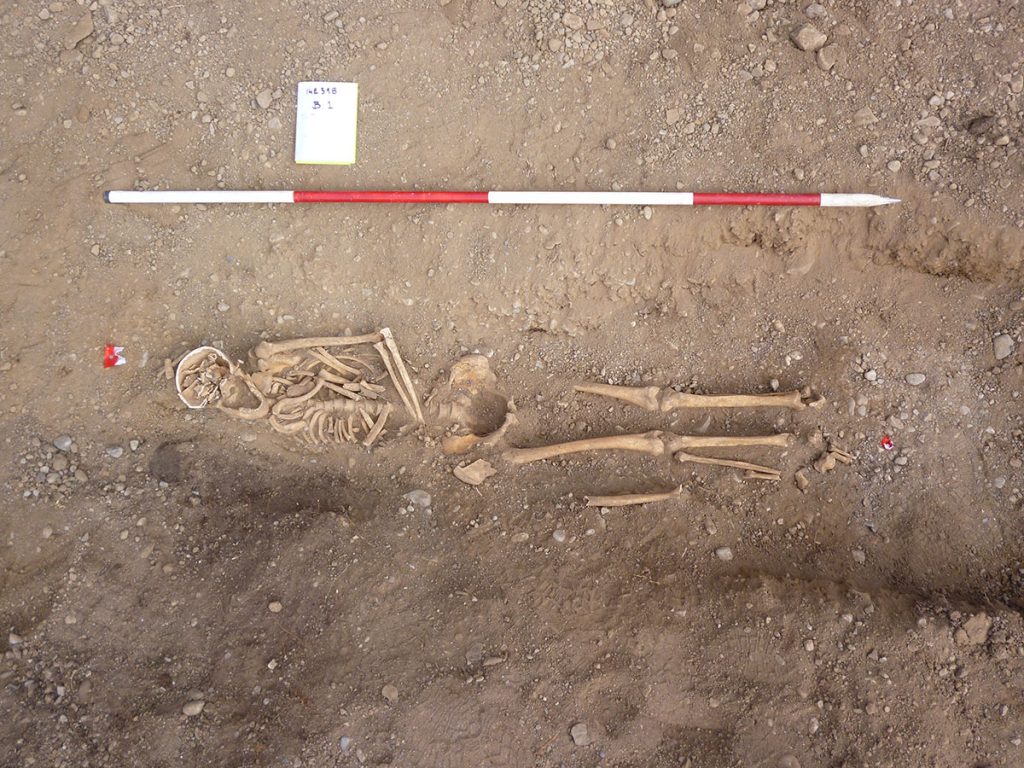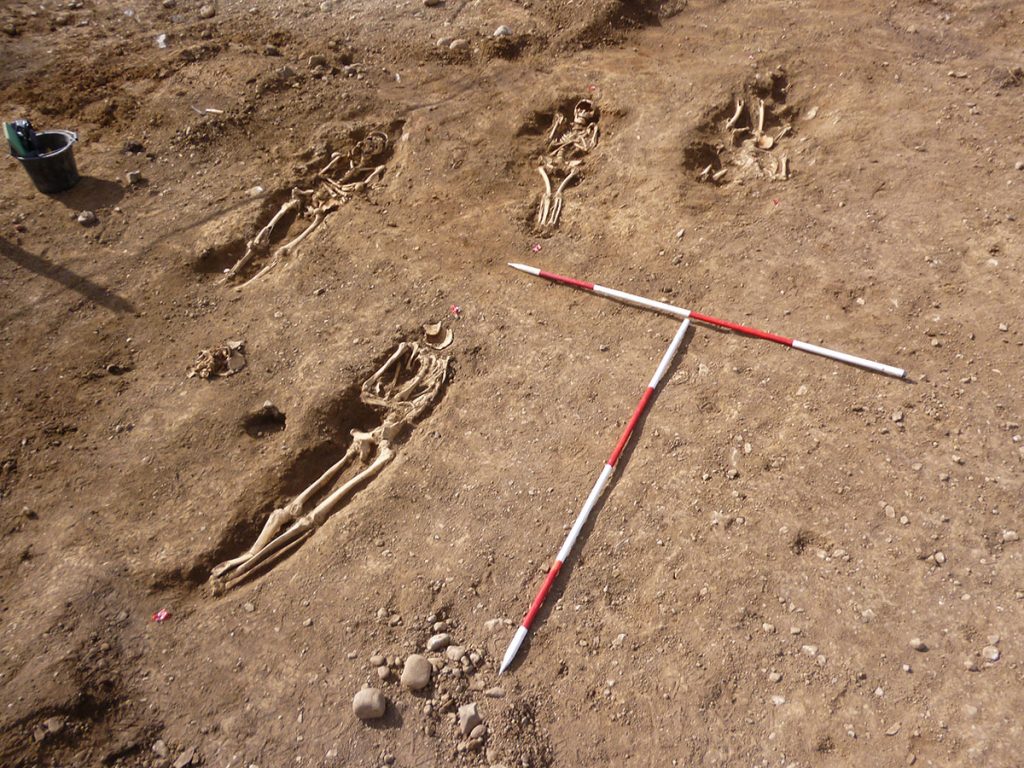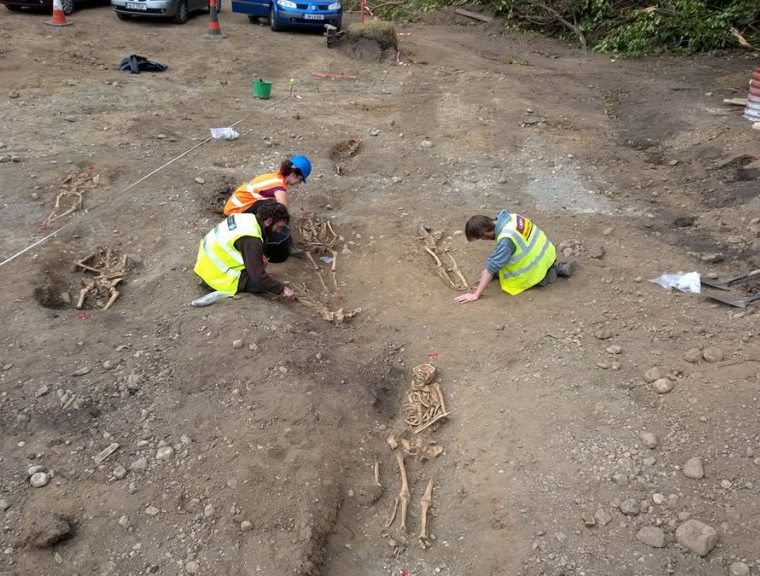A rescue excavation in Kildare Town where human burials were discovered after groundworks had commenced on a site.
We quickly mobilised with all-hands-on-deck to facilitate a weekend excavation that permitted works to continue without any delay to the development.
Twenty eight in-situ inhumation burials were removed from the site, twenty three adults (aged 26-44) and five juveniles. Disarticulated bone suggested an additional 13 adults & 8 juveniles had been interred here. The skeletal remains displayed evidence for degenerative joint disorders, gum disease, assorted healed infections and fractures. An interesting burial was that of a 25-35 year old male who had sustained extensive injuries to his arms and ribs immediately prior to death from a bladed weapon, including an unsuccessful attempt to decapitate him!
In a number of cases, unusual or “deviant” burial practices were observed. For example, an adult female was buried in a tightly crouched position, while a male was buried with his hands placed (tied?) behind his back. Such positions, certainly in late – or post-medieval cemeteries do not conform with prevailing Christian burial edict (supine extended burials with the head to the west) when on the day of resurrection an individual would stand to face God’s judgement with the rising of the sun in the east. These “deviant burials” suggested perhaps necrophobia, an attempt to restrict and confuse the deceased soul to prevent them harming the living.

 Burial 1 suffered several breaks & fractures immediately prior to death, including near decapitation.
Burial 1 suffered several breaks & fractures immediately prior to death, including near decapitation. More burials from the Kildare cemetery site.
More burials from the Kildare cemetery site. Lifting burials at the Kildare cemetery site.
Lifting burials at the Kildare cemetery site. Cleaning in progress at the Kildare cemetery site.
Cleaning in progress at the Kildare cemetery site.